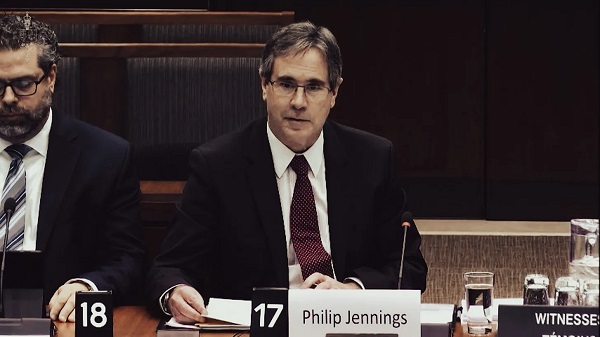Bruce Dowbiggin
Closing Of CHML Latest Sign Of Demise For Local Journalism
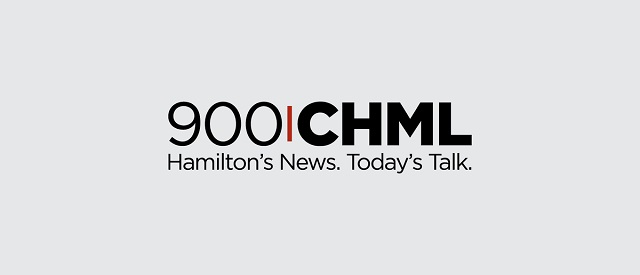
For many Canadians the past month has witnessed the demise of two venerable broadcasting brands in the nation. First, they saw what could be the final CBC Sports-led production of a Summer Olympics. The drama and surprises of the recent Paris Games for Canada were a reminder of the many seminal moments in CBC’s history with the Olympics.
Donovan Bailey’s double golds in 1996. Ben Johnson’s DEI disqualification after winning the 1988 100 metres. Nancy Green’s gold in slalom in 1968. Caetrina LeMay Doan’s back-to-back golds in speed skating (1998 and 2002 Games). Greg Joy’s silver medal in high jump on the final day of the 1976 Montreal Summer Olympics. Gaetan Boucher’s double golds/ one bronze in speed skating medals in 1984. Clara Hughes’ bronze in both the road race and time trial at the 1996 Olympic Games in Atlanta plus winning speed-skating medals in three straight Winter Olympics. We could go on.

As we mentioned a couple of weeks ago, the retirement of anchor Scott Russell is one small precursor of what might come if Pierre Poilievre becomes prime minister in 2025. He has promised to take a scythe to the CBC budget, reportedly eliminating its preferred status as a broadcaster in Canada. (The Corp’s former dominance as a far-flung national signal transmitter disappeared with digital.)
Unless the government makes a special dispensation for Olympics, the Corp’s ability to broadcast a full Olympics in the future could be severely impacted if that happens (CBC has rights to 2026/ 2030 Winter Games & 2028/ 2032 Summer Olympics). The best CBC might do is a sharing agreement with private networks and, possibly, digital outlets like Amazon or Apple. Someone else will have to talk about statue gender equality and trans athlete rights in Milano/ Cortina (2026) and L.A. (2028). A bracing possibility for CBC lovers.
The other broadcast shocker was the sudden demise of Hamilton Ontario’s iconic CHML 900 radio station on August 14. Its owners at Corus shuttered the station with no fanfare or warning to its devoted listeners. For decades CHML (and CHCH TV) was the plucky electronic voice for the western end of the Golden Triangle, the buffer against the massive media voice coming out of Toronto.
Along with the CFL Tiger Cats, CHML personified the blue-collar sensibilities of Steel Town. The Cats were a touchstone of their identity with Perc Allen, Vince Mazza and Bob Bratina (later Hamilton mayor) on their crew. CHML was where local advertisers could pitch their products to the city and down the Niagara Peninsula. It was where local news had a voice. You got your local traffic and sports news first, not as a tag-end of a Toronto newscast.

Now, only the Hamilton Spectator stands as a remnant of a vibrant culture in what has become a booming residential market (and that as a pawn in national newspaper chain). As Hamilton’s population balloons, its identity and ability to reflect this new reality shrivels.
In its own way CHML was like many private stations across the country (CJAD, CJOB, CHED, CHQR, CKNW) that prospered by reflecting the local, not national perspective on news and sports. But two factors aligned against this model in the modern age. First, the advent of different delivery systems from digital to SiriusXM to grey market cut their listenership and savaged their advertising base.
They were not alone. “@cp_doge Legacy media is witnessing a decline in viewership, while 𝕏 continues to break new all-time usage records. This is because legacy media simply can’t compete with the hundreds of millions of people providing real-time information on 𝕏.”
Local stations like CHML, already fighting CBC for listeners, now were challenged by podcasts, independent opinions and a rapidly devolving demographic of aging listeners. They reacted by doubling down on their base, ignoring competing communities. This led to cutbacks, the elimination of familiar stars and the desertion of sponsors.
Second, when financial pressures got tight, many of these stations were bought and controlled by national chains. The economic formula for those stations switched from satisfying a local model of small businesses and city council to feeding a publicly held beast— the national chain. In the short term it brought stability and programming.
But as time went by, listeners noticed that the programming generated by the chain was Toronto-centric. The political slant was also dominated by the 416/613/514 axis. Attempts to localize the stations again via Toronto head office resulted in fly-over management.
Sports rights, often an asset to local programmers, were swallowed by the national all-sports media chains. In 2015 the Cats went to a Bell Radio station for a time, only to return to CHML til 2024. The death of the station sends the team games over to online and a smaller FM frequency.
Worse for local broadcasters, their solvency was now tied to the overall health of the chain. Problems elsewhere become their problems. In the case of CHML, that means the woes of publicly traded CORUS, which is now taking a financial beating. The company is madly slashing staff. ”By the end of August, Corus expects it will have reduced its full-time workforce by 25 per cent — or nearly 800 jobs — compared with September 2022. By the end of May, Corus had cut about 500 employees.”
The radio situation was prefigured by the demise of local Canadian newspapers which went from revenue-generators to welfare cases when they became married to large chains. When we arrived at the Calgary Herald in 1998, the paper had 11 full-time sports reporters and three editors. Now merged with the equally dismal Calgary Sun, there are three full-time reporters. The sports editor is in Edmonton. The paper is laid out in Hamilton. Door to door is non-existent.

The empty Herald/ National Post building, the most desirable real estate property at one time in the city, is now stripped of its presses and is used by a car rental company. The situation is replicated at many of the formerly great Canadian papers. The national chain model is dire with only the Globe & Mail as an semi-independent entity.
And yet this prime minister, dependent on their corporate donations, pumps millions into a sunset industry, propping up a few major communications firms bleeding red ink on the broadcast side (their phone/ communications branches keeps Rogers and Bell in business). Leaving local markets abandoned and neglected while unionized workers and wealthy owners scramble for the scraps left in the trough. As they say in the biz, That’s A Wrap.
Bruce Dowbiggin @dowbboy is the editor of Not The Public Broadcaster A two-time winner of the Gemini Award as Canada’s top television sports broadcaster, he’s a regular contributor to Sirius XM Canada Talks Ch. 167. His new book Deal With It: The Trades That Stunned The NHL And Changed hockey is now available on Amazon. Inexact Science: The Six Most Compelling Draft Years In NHL History, his previous book with his son Evan, was voted the seventh-best professional hockey book of all time by bookauthority.org . His 2004 book Money Players was voted sixth best on the same list, and is available via brucedowbigginbooks.ca.s.
Bruce Dowbiggin
Healthcare And Pipelines Are The Front Lines of Canada’s Struggle To Stay United

Ottawa and Alberta have reached a memorandum of understanding that paves the way for, among other things,. a new oil pipeline in return for higher carbon taxes.. How’s it doing? B.C. and Quebec both reject the idea. The Liberals former Climate minister resigned his cabinet post.
The most amazing feature of the Mark Carney/Danielle Smith MOU is that both politicians feverishly hope that the deal fails. Carney can tell Quebec that he tried to reason with Smith, and Smith can say she tried to meet the federalists halfway. Failure suits their larger purposes. Carney to fold Canada into Euro climate insanity and Smith into a strong motive for separation.
We’ll have more in. our next column. In the meantime, another Alberta initiative on healthcare has stirred up the hornets of single payer.
To paraphrase Winston Churchill, “Canada’s health system is the worst in the world. Except for all the other systems.” If there is anything left that Canadians agree upon it’s that their provincial healthcare plan is a disaster that needs a boatload of new money and the same old class rhetoric about two-tier healthcare.
Both prescriptions have been tried multiple times since Tommy Douglas made single-payer healthcare a reality. As a result today’s delivery systems are constantly strained to breaking and the money poured in to support it evaporates in red tape and vested interests.
But suggest that Canada adopt the method of somewhere else and you get back stares. Who does it better? How can we copy that? Crickets. Then ask governments to cut back and create efficiencies. No one wants to tell the unions they are the first to move. As a result, operating rooms sit empty for lack of trained nurses and rationed doctors. The system is all dressed with nowhere to go.

There are many earnest people trying their best to fit the square peg in the round hole. But so far it has produced a Frankenstein quilt of private clinics in other provinces handling overflows and American hospitals taking tens of thousands of overflows or critical cases. Ontarians travelling to Quebec for knee surgery. Albertans heading to eastern B.C. for hips and shoulders. Nova Scotians going to Boston for back surgery.
To say nothing of the legions of Canadians on waiting lists for terminal cancer or heart problems who, in despair of dying before seeing a specialist in 18-24 months, voyage to Lithuania, India or Mexico to save their lives. Everyone knows a story of a family member or friend surgery shopping. Every Canadian health authority sympathizes. But little solves the problem.
Which has led to predictable grumbling. @Tablesalt13 if the Liberals hadn’t surged immigration over the last 4-5 years and if all of the money spent on refugees and foreign aid was redirected to health care how much shorter would Canada’s medical waitlists be?

And if any small progress is made the radical armies opposed to two-tiered healthcare raise a stink in the media, stopping that progress in its tracks. Suggesting public/ private healthcare systems is a quick trip to a Toronto Star editorial and losing your next election.
Into the impasse Alberta has introduced Bill 11 to create a parallel private–public surgery system that allows surgeons to perform non-urgent procedures privately under set conditions, moving ahead with the premier’s announcement last week. The government says the approach will shorten wait times and help recruit doctors, while critics argue it risks two-tier care.
The legislation marks a major shift in healthcare reform in Alberta and faces (shock) strong opposition from the NDP which is pairing these reforms with the province’s use of the notwithstanding clause in banning radical trans surgery and medication for minors in the province.
There are examples of two-tiered healthcare elsewhere in the West. France, Ireland, Denmark, Switzerland and Germany, among others, use a dual-tracked system mixing public and private coverages. Reports FHI, “In the most successful European healthcare systems, e.g., Germany and Switzerland, the federal government handles the PEC risk, via national pools and government subsidies, sparing the burden on individual insurers.” While not perfect it hasn’t produced class warfare.
The Americans, meanwhile learned to their chagrin with ObamaCare (the Affordable Care Act, that government healthcare is not the answer. The U.S. heath system replaces government accounting with health insurance rationers as the immoveable force. Many Americans were outside this traditional system, paying out-of-pocket. Under the Obama plan everyone would be forced into a plan, like it or not.
The AFI continues, “ACA has a flawed design. Its architects meant to appeal to the public, promising what the old system could not fully deliver – guaranteed access to affordable health cover and coverage for pre-existing conditions (PECs). But they were wrong about being able to keep your doctor or your old policy if you wanted.
Previously individual policies had to exclude PEC coverage to be financially viable. Yet employer group policies often covered it after a waiting period, but the extra costs were spread over their fellow workers – a real burden on medium and small-sized companies. Under Obamacare, the very high PEC costs are still spread too narrowly – on each of the very few insurers who have agreed to stay as exchange insurers.”
In other words getting a universal system that helps the needy while not degrading treatment is illusory. Alberta is willing to admit that fact. Like agreement on pipelines it will face nothing but headwinds from the diehards (pun intended) who still believe Michael Moore’s fairy tales about a free system in Canada. And will do nothing to bind Canada’s warring factions.
Bruce Dowbiggin @dowbboy is the editor of Not The Public Broadcaster A two-time winner of the Gemini Award as Canada’s top television sports broadcaster, his new book Deal With It: The Trades That Stunned The NHL And Changed hockey is now available on Amazon. Inexact Science: The Six Most Compelling Draft Years In NHL History, his previous book with his son Evan, was voted the seventh-best professional hockey book of all time by bookauthority.org . His 2004 book Money Players was voted sixth best on the same list, and is available via brucedowbigginbooks.ca.
Bruce Dowbiggin
Elbows Down For The Not-So-Magnificent Seven: Canada’s Wilting NHL Septet

The week after Grey Cup is always a good time to look in for our first serious analysis at how Canada’s NHL teams are doing. So let’s take a quick… WHOA… what’s happening here?
If the playoffs were to begin next week (we wish) then it would be a cold breakfast for teams in Elbows Up. Just two clubs—Winnipeg and Montreal— would even qualify for the postseason. And the Jets have just found out their star goalie Connor Hellybuyck is unlikely to play much before mid-January.
The two putative Canadian hopes for a first Stanley cup since 1993— Toronto and Edmonton— are sucking on vapour trails. After being raked 5-2 by Montreal, the Leafs have just a 24.9 percent chance of making the playoffs. Conor McDavid’s Oilers have a better percentage but their same old goaltending woes and a ticking clock on McDavid’s back.
Granted that, going into the weekend, no team in the East was more than four points out of the wild-card spot while all but three teams were within three points of a playoff spot in the West. But the Canadian teams are stuck behind some premium teams and need lotsa’ luck so they end up like Max Verstappen not Lance Stroll.
Maybe a Canadian men’s Olympic gold medal can reduce the sting of no Cup, no future for another season. But it won’t save the jobs of coaches in Calgary, Toronto and Vancouver unlikely to survive also-ran status. Let’s take a close look at the not-so-magnificent seven starting west to east.
Vancouver: The Nucks have a sterling 4 percent chance of making the postseason as of this writing. In the powerful Western Conference that’s still an insult to a franchise that hasn’t recovered from the hasty 2013 firing of GM Mike Gillis—who won… let us us see… two Presidents Trophies and six Western Conference titles in a row. Since then? Uh, bagel.
It’s nice that Elias Petterson has come back from the morgue this season. But it will come down to goalie Thatcher Demko staying healthy and whether ownership wants to go full tank or just a quarter-tank for a draft pick. Hard to see Adam Foote surviving as coach.
Calgary: Speaking of tanking, everyone in Calgary wants the Flames to do a teardown for the top picks in the 2026 Draft. Everyone, except, for the Flames absentee owner Murray Edwards and his robo-spokesman Don Maloney. They want the five percent chance at a playoff spot and a mid-round first draft pick. The Flames missed the chance to restructure in 2023 when Johnny Gaudreau and Matthew Tkachuk departed. But again, denialism in the management suite tried to make it an even trade with Florida, sign huge new contracts and keep pushing. Bad decision.
Only question here is when does the purge begin and what can they get to help Dustin Wolf— signed for seven more years— in net?
Edmonton: We’ve written at length here and here about the McDavid saga. He and the management team halved the baby with a short-term deal to pretend he’s staying in the Chuck. Their healthy chance of making the playoffs (75.5 percent) says one thing. Their play in the putrid Pacific— they’re given up six-goals-plus five times in just 24 games— says another. But as long as McDavid and Leon Draisaitl stay healthy they might still finesse a ticket to a their third straight Finals ride.
But if they get near the trading deadline and the postseason is a mirage the noise to trade McDavid will be deafening. And the offers staggering for a capped-out team.
Winnipeg: Last year was supposed to be the Jets big year. Okay, that didn’t work out so well. The Jets kept their core together for another chance at finally making a serious playoff run. So it will all come down, as it has in the past, to the health and playoff juju of Hellybuyck. Their ticket out of the Central Division lies in beating powerful Colorado and Dallas and, if that happens, staying healthy.
The Jets would probably just as well their stars didn’t go get beat up in the Olympics, but that’s unlikely. There’s always been a karma about Winnipeg breaking the Canada Cup jinx. Still a long shot.

EAST
Toronto: So you’re saying Mitch Marner wasn’t the problem with the highly rated Maple Leafs never getting as far as the Conference Finals? They’re 3-5-2 in their last ten, their captain is still a sulky figure— only now his output doesn’t make it worthwhile. And the Toronto media is trying to do the players’ will to get coach Craig Berube fired for them. The same problems remain from years previous: dubious goaltending and a shallow talent pool on defence.
The biggest problem for the Leafs is their closing window for success. They’re old, have few tradeable assets in the system and have traded top picks away for short-term gains that never appeared. Expect fireworks after the Olympics if this crate doesn’t get moving. New MLSE boss Keith Pelley has no ties to the current administration and will sweep clean.
Ottawa: The Sens have managed to survive the loss of captain Brad Tkachuck to a broken finger. How? Ottawa have gotten goals from 17 different players which means they have balance. And so far they are above average 5-on-5. All good. They’ve also taken advantage of the mediocrity of the Leafs and other Eastern teams to stay afloat.
Their Achilles heel? Between the pipes. Both goalies have a save percentage under .875 and that ain’t going to cut it come spring. As always finances will limit their trades and manoeuvrability.

Montreal: The Habs were the fashionable pick before the season as the Canadian team most likely to get to the Cup they last won in 1993. Defenceman Laine Hutson is all that he promised last year. The dynamic top line of Cole Caufield, Nick Suzuki and Juraj Slafkovsky have cast back to the days of the Flying Frenchmen. Managing expectations in Montreal’s rabid hockey culture— where a misplaced apostrophe can cause chaos—means never taking anything for granted.
Now if only goaltender Jacob Dobes can keep up his play long enough for Sam Montembault to regain his form the Habs could be a thing in the spring. At this rate they might be the only thing.
Bruce Dowbiggin @dowbboy is the editor of Not The Public Broadcaster A two-time winner of the Gemini Award as Canada’s top television sports broadcaster, his new book Deal With It: The Trades That Stunned The NHL And Changed hockey is now available on Amazon. Inexact Science: The Six Most Compelling Draft Years In NHL History, his previous book with his son Evan, was voted the seventh-best professional hockey book of all time by bookauthority.org . His 2004 book Money Players was voted sixth best on the same list, and is available via brucedowbigginbooks.ca.
-

 Alberta1 day ago
Alberta1 day agoFrom Underdog to Top Broodmare
-

 Opinion11 hours ago
Opinion11 hours agoLandmark 2025 Study Says Near-Death Experiences Can’t Be Explained Away
-

 Focal Points12 hours ago
Focal Points12 hours agoSTUDY: TikTok, Instagram, and YouTube Shorts Induce Measurable “Brain Rot”
-
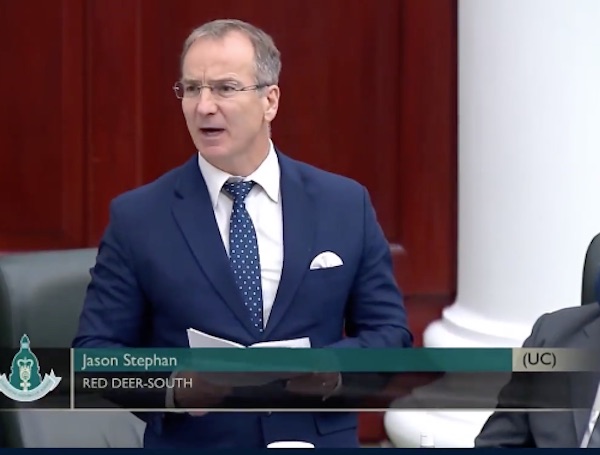
 Alberta10 hours ago
Alberta10 hours agoRed Deer’s Jason Stephan calls for citizen-led referendum on late-term abortion ban in Alberta
-
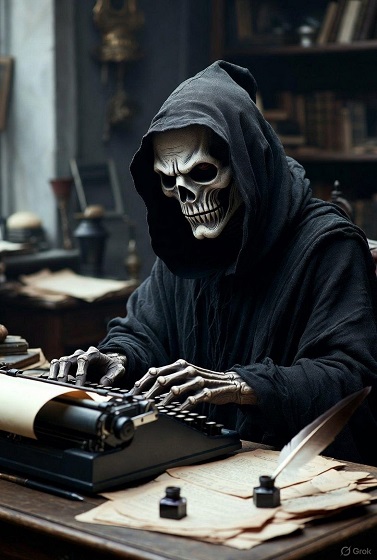
 Health13 hours ago
Health13 hours agoTens of thousands are dying on waiting lists following decades of media reluctance to debate healthcare
-

 Indigenous9 hours ago
Indigenous9 hours agoIndigenous activist wins landmark court ruling for financial transparency
-
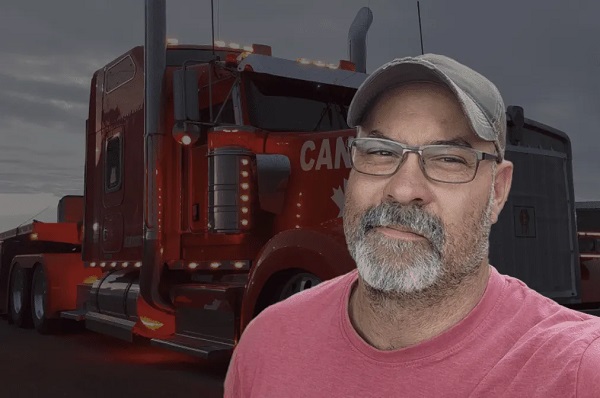
 COVID-192 days ago
COVID-192 days agoCanadian government seeking to destroy Freedom Convoy leader, taking Big Red from Chris Barber
-

 National2 days ago
National2 days agoQuebec proposes to ban public prayer, harden laws against religious symbols



